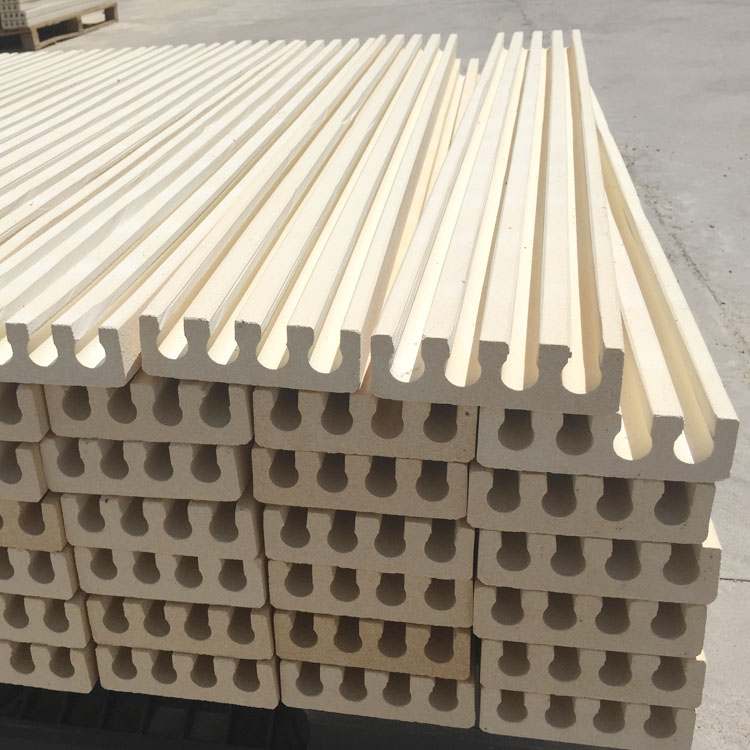
Cordierite kiln furniture is widely used in high - temperature heat treatment processes due to its unique physical properties. Its low - density and porous structure is a key feature. The porosity of cordierite can reach about 20% - 30%, which endows it with excellent thermal shock resistance. According to industry research, compared with traditional kiln furniture materials, cordierite kiln furniture can withstand rapid temperature changes of up to 200 - 300°C without significant damage.

The low - density and porous structure of cordierite plays a crucial role in its thermal shock resistance. The pores act as buffers, absorbing the stress generated by thermal expansion and contraction during rapid heating and cooling. When the temperature changes rapidly, the internal stress of the kiln furniture is dispersed through these pores, reducing the risk of cracking. For example, in a ceramic firing process, if the temperature rises from room temperature to 1000°C within 1 hour, cordierite kiln furniture can maintain its structural integrity better than other materials.
In high - temperature heat treatment, there are several factors that can lead to fatigue and cracking of cordierite kiln furniture. One of the main factors is the uneven temperature distribution. When the temperature difference between different parts of the kiln furniture exceeds 100 - 150°C, thermal stress concentration occurs, which may cause micro - cracks. Another factor is the long - term exposure to high - temperature and corrosive environments. For instance, in the heat treatment of metal alloys, the chemical reaction between the kiln furniture and the metal vapor can gradually corrode the surface of the kiln furniture, weakening its strength.
.jpg)
Regular daily inspections are essential for the maintenance of cordierite kiln furniture. Operators should check for visible cracks, surface damage, and deformation. It is recommended to conduct a visual inspection before and after each use. Any signs of damage should be recorded and evaluated to determine whether the kiln furniture can continue to be used safely.
In the heating and cooling processes, scientific operation methods should be adopted. The heating and cooling rates should be controlled within a reasonable range. For example, the heating rate should not exceed 5 - 10°C per minute, and the cooling rate should be slower than 3 - 5°C per minute. This can effectively reduce the thermal stress on the kiln furniture and extend its service life.
Based on practical experience, some operation skills can further improve the performance of cordierite kiln furniture. For example, pre - heating the kiln furniture before use can reduce the temperature difference at the beginning of the heating process. In addition, using protective coatings can enhance the corrosion resistance of the kiln furniture. A real - world case shows that a ceramic factory extended the service life of its cordierite kiln furniture by about 30% after adopting these optimization strategies.

In the ceramic field, cordierite kiln furniture should be selected according to the firing temperature and process requirements. For high - temperature firing processes above 1200°C, high - purity cordierite products are recommended. In the metal heat treatment field, considering the corrosion of metal vapor, kiln furniture with a special anti - corrosion coating should be used. In the composite material field, the shape and size of the kiln furniture need to be precisely designed to ensure uniform heat transfer.
In summary, cordierite kiln furniture has significant technical advantages, such as excellent thermal shock resistance, long service life, and high adaptability to different heat treatment processes. By following the maintenance and operation suggestions in this article, users can effectively extend the service life of the kiln furniture, improve production continuity, and ensure product quality. If you want to learn more about cordierite kiln furniture and optimize your heat treatment process, click here to consult us.

